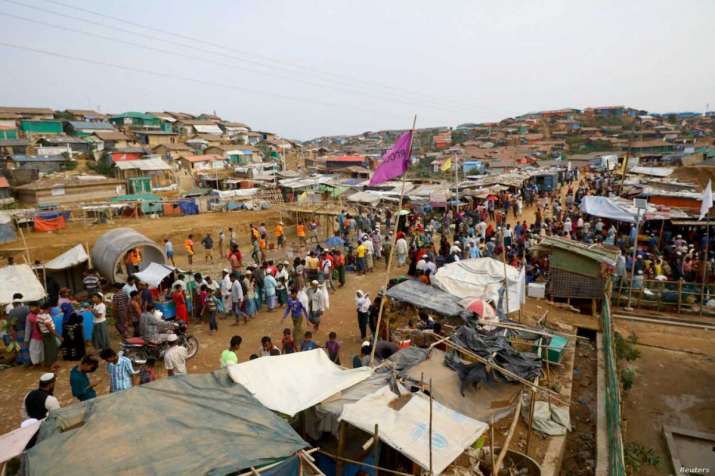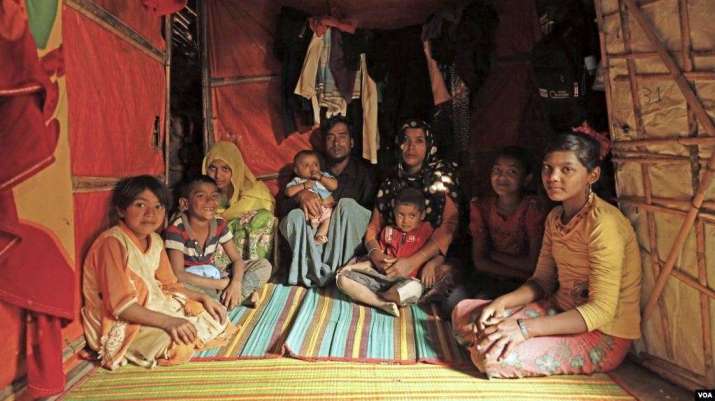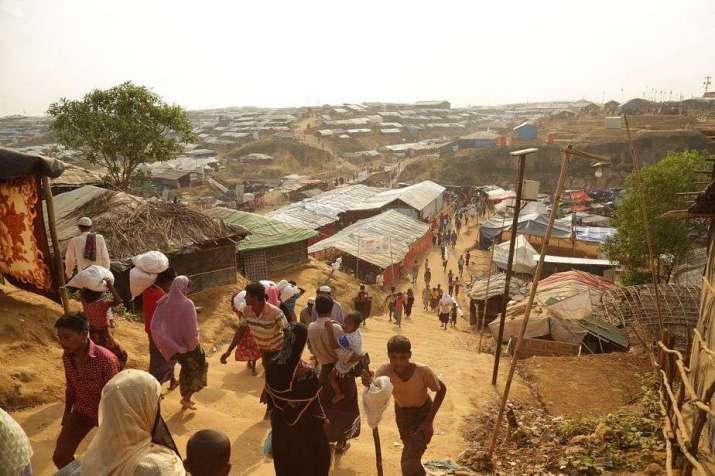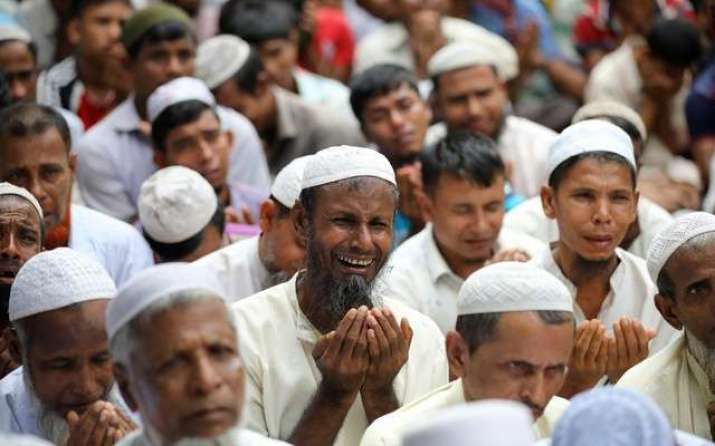
Experts and relief workers are warning of the potentially devastating risk of a COVID-19 outbreak among the approximately one million Rohingya Muslim refugees packed into crowded temporary camps near the town of Cox’s Bazar in Bangladesh.
The refugees, who have poured into Bangladesh since 2017, fleeing suppression by state security forces in neighboring Buddhist-majority Myanmar, are living in cramped, wretched shacks—an estimated 40,000 people per square kilometer—with poor sanitation, limited access to medical care, and dangerously exposed to the spread of any contagion. While there have so far been no reported cases of coronavirus infection in the camps, officials remain concerned.
“We are extremely worried. If the virus reaches here, it will spread like wildfire,” Rohingya community leader Mohammad Jubayer was quoted as saying. “A lot of aid and local community workers people enter the camps every day. Some diaspora Rohingya have also returned in recent days. They may be carrying the virus.” (Al Jazeera)
At the time of writing on 8 April, global SARS-CoV-2 coronavirus infections were reported to total 1,431,900, with 82,195 deaths so far confirmed and 301,649 recovered.* The World Health Organization has previously estimated the mortality rate from the virus at 3.4 per cent, based on preliminary data, with the elderly and people with underlying health conditions considered most at risk. Bangladesh has reported 164 confirmed COVID-19 cases, with 17 deaths and 33 recovered.
Last week, according to officials, a Rohingya family of four returning from India was quarantined at a UN transit centre for testing. In nearby Cox’s Bazar, a Bangladeshi woman recently tested positive for COVID-19.

Compounding the risk to the camps’ inhabitants, awareness of the pandemic among the Rohingya is limited as the government cut off their access to the internet more than six months ago, restricting internet coverage and seizing SIM cards. The Rohingya no longer have access to news about the fate of family members still in Myanmar, or accurate, up-to-date information about the coronavirus pandemic. The internet blackout has also obstructed humanitarian groups from addressing the COVID-19 threat, hindering the provision of emergency health services and the coordination of preventive measures.
“Can you imagine being quarantined in the world’s largest refugee camp [Kutupalong-Balukhali, home to more than 600,000 people], cut off from the rest of the world?” wrote Sirazul Islam, youth advocate for the human rights group British Rohingya Community UK. “Giving the Rohingya people access to internet and cell phone data is the only means of providing enough information to allow residents a fighting chance in limiting the spread of the virus. The lack of awareness of the virus in the camps have led to various misunderstandings and rumors, which inevitably create panic and chaos. Information is not a luxury, but a basic right and essential to securing the well-being of the Rohingya people.” (The Diplomat)
Instead, the authorities have focused on reducing outside access to 34 refugee camps. “We have minimized aid activities in the camps. Only food, health and law-related work will continue,” said Bimol Chakma, an official from the Bangladesh refugee commissioner’s office. (Al Jazeera)
Families in the camps are forced to live in muddy shacks of barely 10 square meters, which are shared by up to 12 people and separated from their neighbors by sheets of tarpaulin. The available medical care is rudimentary and diseases are often left untreated.
“They’ve come here after traumatic experiences which many of us cannot even comfortably listen to. They are not the strongest physically or mentally—all of this really effects immunity,” said Deepmala Mahla, Asia regional director of humanitarian group CARE International. (Financial Times)

Religious tensions between Buddhists and Muslims in neighboring Myanmar have simmered for almost half a century, and Myanmar’s government classifies Rohingya Muslims as stateless foreign migrants, even though many communities have lived in Myanmar for generations. Hundreds of thousands of Rohingya have reportedly fled military clearance operations and attacks by Buddhist mobs, seeking refuge in neighboring Bangladesh in what the United Nations has described as the “world’s fastest growing refugee crisis.”
The humanitarian organization Human Rights Watch cited a 52-year-old Rohingya woman as saying that her community had received no formal information about the coronavirus pandemic—she had only been told by religious leaders to pray: “We are praying together in family groups of 10 or 12 people together. That’s all we know, nobody told us anything more.” (Human Rights Watch)
“While authorities claim that there has been no community COVID-19 transmission in the refugee camps or surrounding communities, medical experts in Bangladesh say that not enough people have been tested to draw that conclusion,” Human Rights Watch reported. “The Institute of Epidemiology, Disease Control and Research (IEDCR), the national institute in charge of Bangladesh’s COVID-19 response, has so far only tested 920 people among a population of nearly 170 million. There is currently no testing capacity outside of Dhaka. Oxygen, respirators, and other key emergency equipment are in short supply, particularly outside of the capital.” (Human Rights Watch)
The organization also reported that aid workers at the camps had been specifically instructed by government officials not to conduct information campaigns about COVID-19 to avoid igniting panic among the refugees. But rather than reducing anxiety, the dearth of accurate information has been contributing to the spread of misinformation, Human Rights Watch said.
“The Bangladesh government is in a race against the clock to contain the spread of coronavirus, including in the Rohingya refugee camps, and can’t afford to waste precious time with harmful policies,” said Human Rights Watch’s Asia director Brad Adams. “Authorities should lift the internet shutdown, which is obstructing crucial information about symptoms and prevention, or end up risking the lives of refugees, host communities, and healthcare workers.” (Human Rights Watch)

See more
Rohingya brace for coronavirus pandemic (Financial Times)
Coronavirus panic grips Rohingya camps in Bangladesh (Al Jazeera)
Bangladesh: Internet Ban Risks Rohingya Lives (Human Rights Watch)
A Rohingya Coronavirus Catastrophe Looms if Their Internet Blackout Continues (The Diplomat)
Bangladesh Urged to Lift Telecom Ban on Rohingya Camps to Ease COVID-19 Risks (VOA News)














